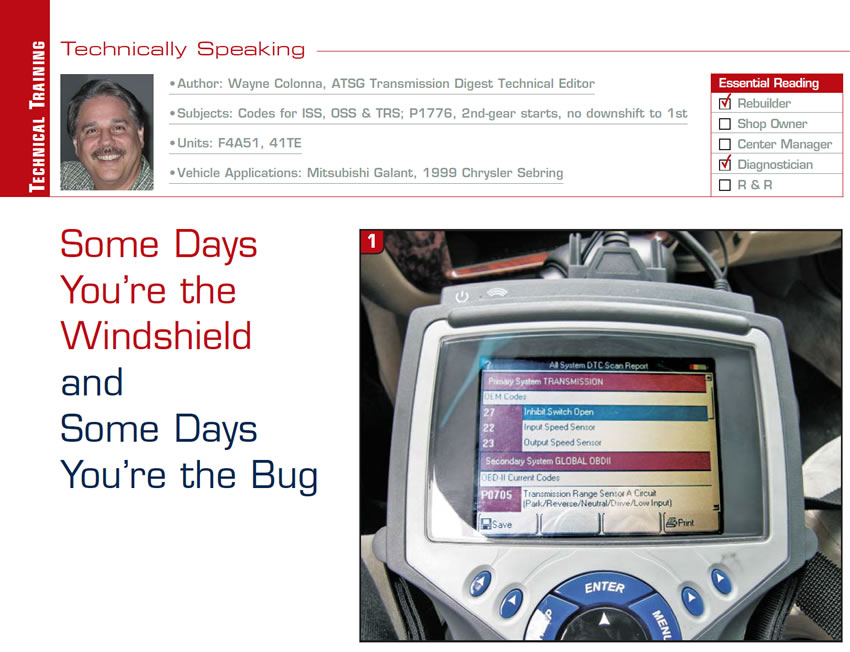Fretting
The ASM Handbook on Fatigue and Fracture (Figure 1) defines fretting as: “A special wear process that occurs at the contact area between two materials under load and subject to minute relative motion by vibration or some other force.”
Fretting wear is usually associated with electrical contacts rather than non-electrical things, but fretting and fretting wear occur with both.
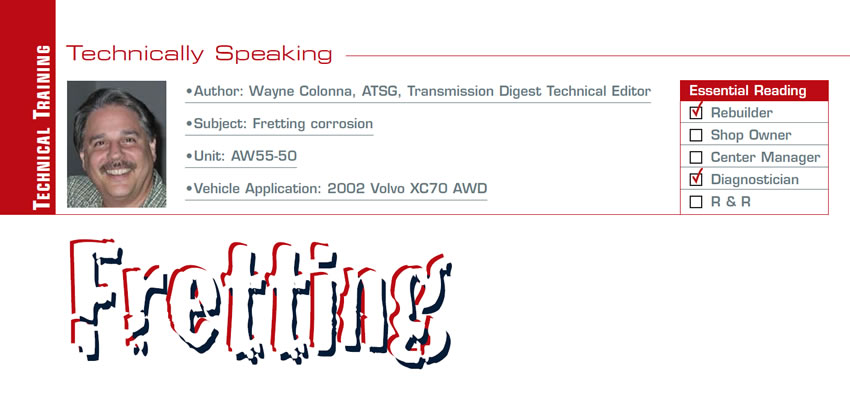
Going Nowhere Fast
Just recently my uncle backed out of his driveway with his 2003 Ford Taurus wagon (AX4N transmission), put it in drive and had no movement. He then put it in reverse and still had no movement. So there he was stuck in front of his house, going nowhere fast! And I must say that if you are going to experience a sudden no-move condition with your vehicle, there is no better place than in the front of your home. The vehicle was then taken to the good folks at R&J Transmission Service in Waldwick, N.J., where they did a great job taking care of my Uncle’s problem.

Temperature Rising
Temperature rising could be a title for an article related to “global warming,” but this article is not about melting snow caps. This is about a temperature meltdown that can happen to a shop owner and/or technician dealing with a transmission problem that will not go away – specifically with a 01M in a 2001-03 VW Jetta or a 01P in a Eurovan.
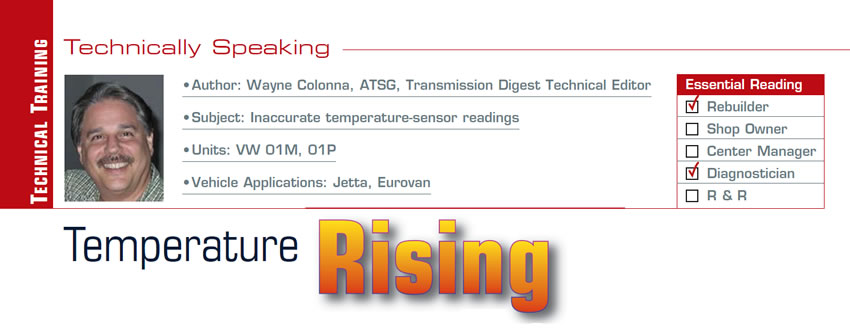
Don’t Blow It
The JF506E in VW, Land Rover and Jaguar applications experiences a condition of no upshift out of first gear when cold due to mechanical malfunctions of the 2/4-brake timing and duty solenoids (Figure 1). And there are times when this transmission may also experience a no-reverse condition due to a mechanical malfunction of the low-clutch timing solenoid (Figure 2). This information has been in our past seminars as well as in our bulletins, and since the cold season is upon us it’s good to keep this in mind.
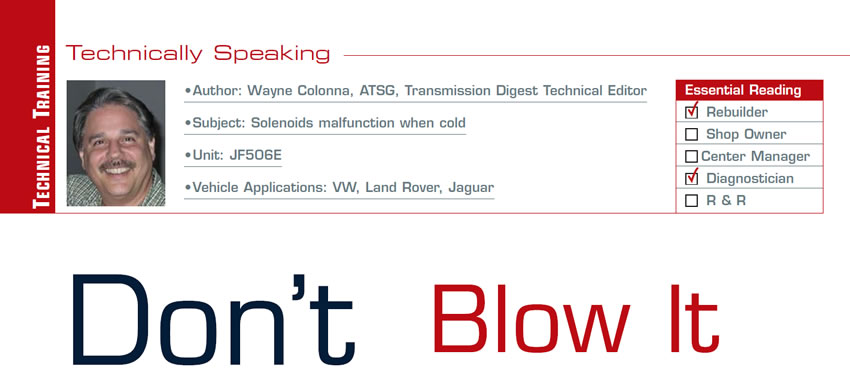
A Short Story of a Helpful Tip
He described how the transmission was rebuilt but soon came back with a noise complaint. When he inspected it he noticed that upon initial startup he could hear no noise, but after 20 seconds or so the noise occurred while the vehicle was idling in either Park or Neutral. When he placed it into gear the noise went away, but as soon as the vehicle began to move the noise returned. As the transmission shifted the noise lessened, and by the time he reached third or fourth gear the noise was no longer present. He also noticed that every once in a while the vehicle would try to stall when coming to a stop.
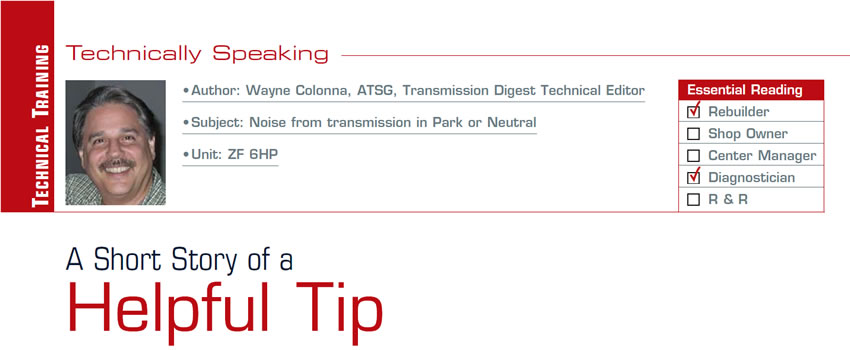
Getting Greased
In an ATSG seminar several years back we covered a noise problem with Ford’s 5R55W/S transmissions in 4×4 applications. The description of the noise was either a clank or metallic-type noise during any forward or reverse engagements. The noise was typically perceived as a differential or transfer-case problem.
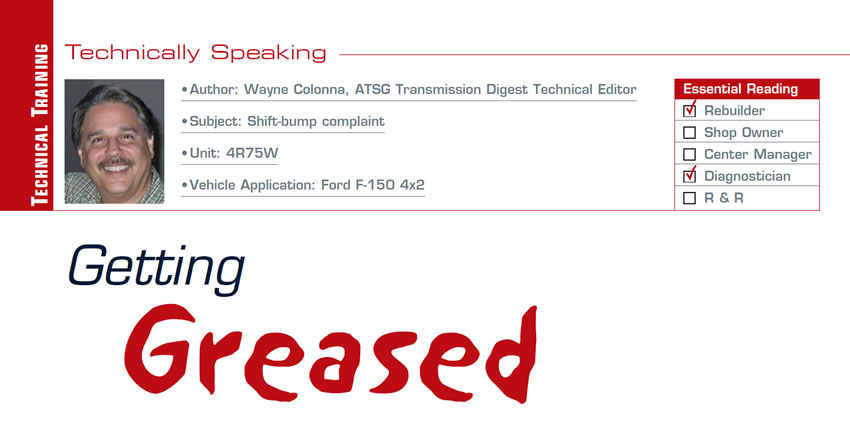
62TE: No Reverse
A vehicle using a 62TE transmission comes into the shop with a no-reverse complaint but drives well going forward. Even with the solenoid pack disconnected it still has no reverse but drives forward in failsafe third gear well.
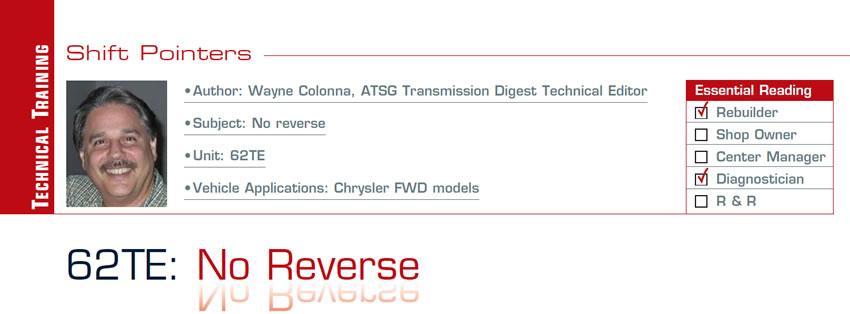
Double Trouble
In today’s world of automatic transmissions we see several different types of solenoids being used depending on the strategy the engineer chose to employ. There are the typical on/off solenoids that could be normally closed or normally open. And then there are PWM solenoids, normally applied or normally vented.
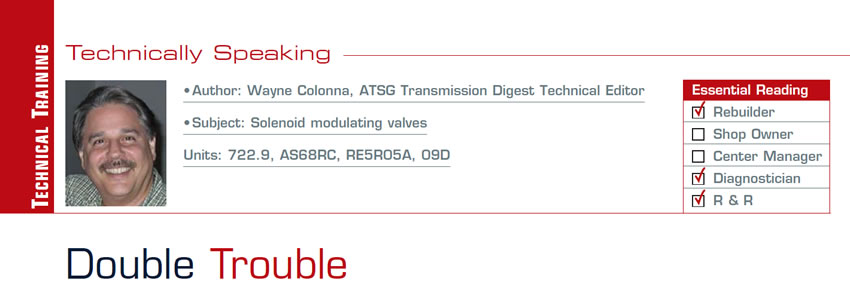
Al Turner
The Technically Speaking article in the June issue of Transmission Digest was an article called A Twist of Fate. The subject matter was the effects produced when an AS68RC transmission’s stator shaft turns in the pump cover. The article briefly mentioned a similar issue with the Allison 1000/2000 transmission. This comment prompted several people to call asking for more information about it.
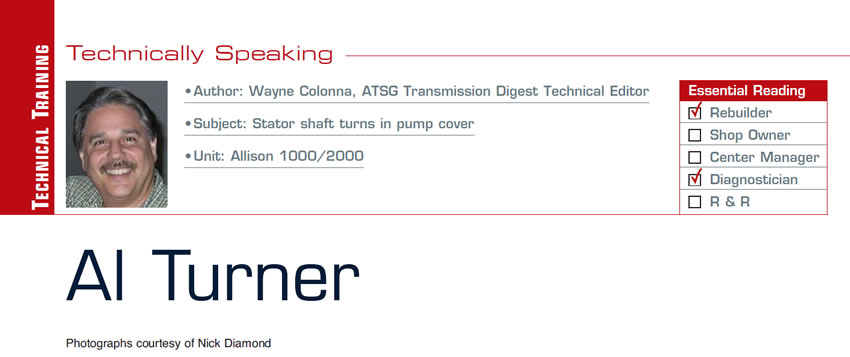
Secrets
From one perspective it appears that the government and the manufacturers are working hand in hand to dismantle the aftermarket repair industry. Of course, their view is different. The government is concerned about fuel economy and emissions. So it places on the manufacturers CAFE ratings and emissions demands that have in many ways accelerated this technological advancement to meet those demands. Then, of course, there is competition among manufacturers to meet customer demands for as many comforts as the vehicle can offer.
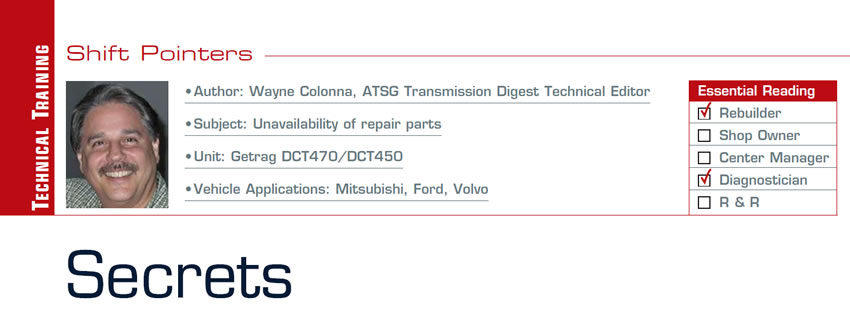
A Significant Departure – the 48RE Transmission
For many of you who have been working on the Dodge/Jeep RE-series transmissions, you are more than likely all too familiar with an engine-stall condition when reverse is selected. This problem usually reveals itself when the transmission is hot. The usual cause is a defective pump. From time to time a restricted cooler would be the culprit, but in most instances it has been the pump.
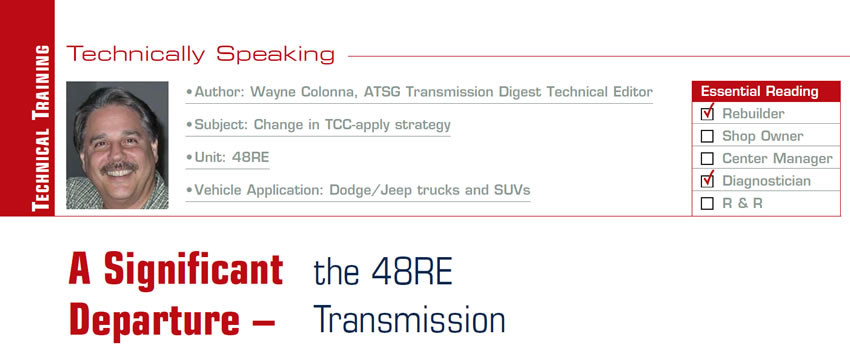
Some Days You’re the Windshield and Some Days You’re the Bug
The first was at Luis Zabala’s shop, where it’s not uncommon to have a Mitsubishi Galant with an F4A51 transmission come into the shop sporting codes for the input- and output-speed sensors and the transmission range sensor (Figure 1). Of course, the vehicle is in failsafe with these codes.
